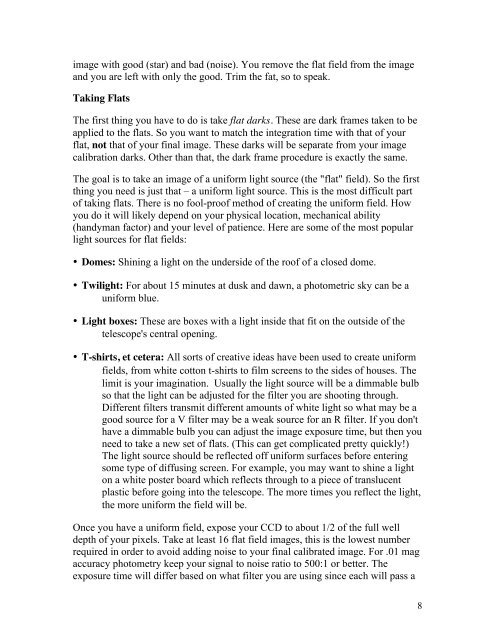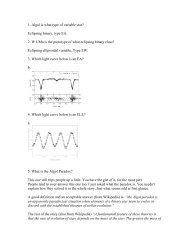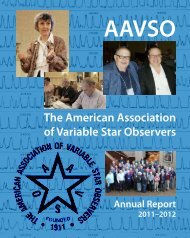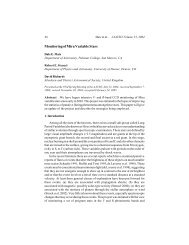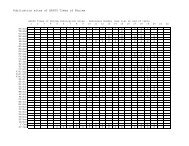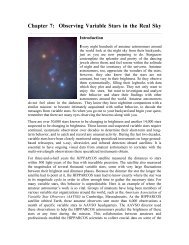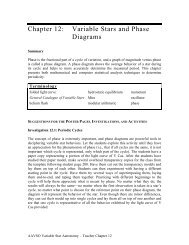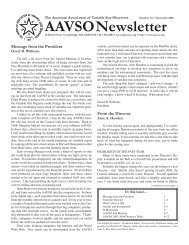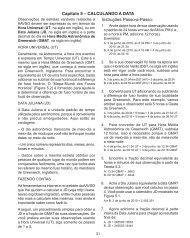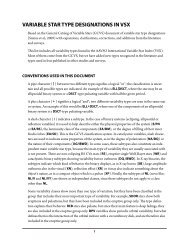CCD Image Calibration - AAVSO
CCD Image Calibration - AAVSO
CCD Image Calibration - AAVSO
Create successful ePaper yourself
Turn your PDF publications into a flip-book with our unique Google optimized e-Paper software.
image with good (star) and bad (noise). You remove the flat field from the imageand you are left with only the good. Trim the fat, so to speak.Taking FlatsThe first thing you have to do is take flat darks. These are dark frames taken to beapplied to the flats. So you want to match the integration time with that of yourflat, not that of your final image. These darks will be separate from your imagecalibration darks. Other than that, the dark frame procedure is exactly the same.The goal is to take an image of a uniform light source (the "flat" field). So the firstthing you need is just that – a uniform light source. This is the most difficult partof taking flats. There is no fool-proof method of creating the uniform field. Howyou do it will likely depend on your physical location, mechanical ability(handyman factor) and your level of patience. Here are some of the most popularlight sources for flat fields:• Domes: Shining a light on the underside of the roof of a closed dome.• Twilight: For about 15 minutes at dusk and dawn, a photometric sky can be auniform blue.• Light boxes: These are boxes with a light inside that fit on the outside of thetelescope's central opening.• T-shirts, et cetera: All sorts of creative ideas have been used to create uniformfields, from white cotton t-shirts to film screens to the sides of houses. Thelimit is your imagination. Usually the light source will be a dimmable bulbso that the light can be adjusted for the filter you are shooting through.Different filters transmit different amounts of white light so what may be agood source for a V filter may be a weak source for an R filter. If you don'thave a dimmable bulb you can adjust the image exposure time, but then youneed to take a new set of flats. (This can get complicated pretty quickly!)The light source should be reflected off uniform surfaces before enteringsome type of diffusing screen. For example, you may want to shine a lighton a white poster board which reflects through to a piece of translucentplastic before going into the telescope. The more times you reflect the light,the more uniform the field will be.Once you have a uniform field, expose your <strong>CCD</strong> to about 1/2 of the full welldepth of your pixels. Take at least 16 flat field images, this is the lowest numberrequired in order to avoid adding noise to your final calibrated image. For .01 magaccuracy photometry keep your signal to noise ratio to 500:1 or better. Theexposure time will differ based on what filter you are using since each will pass a8


